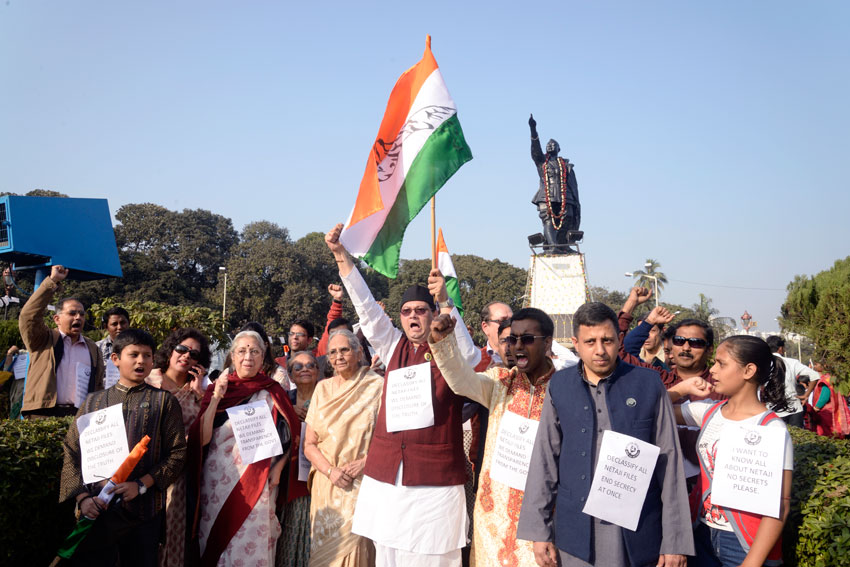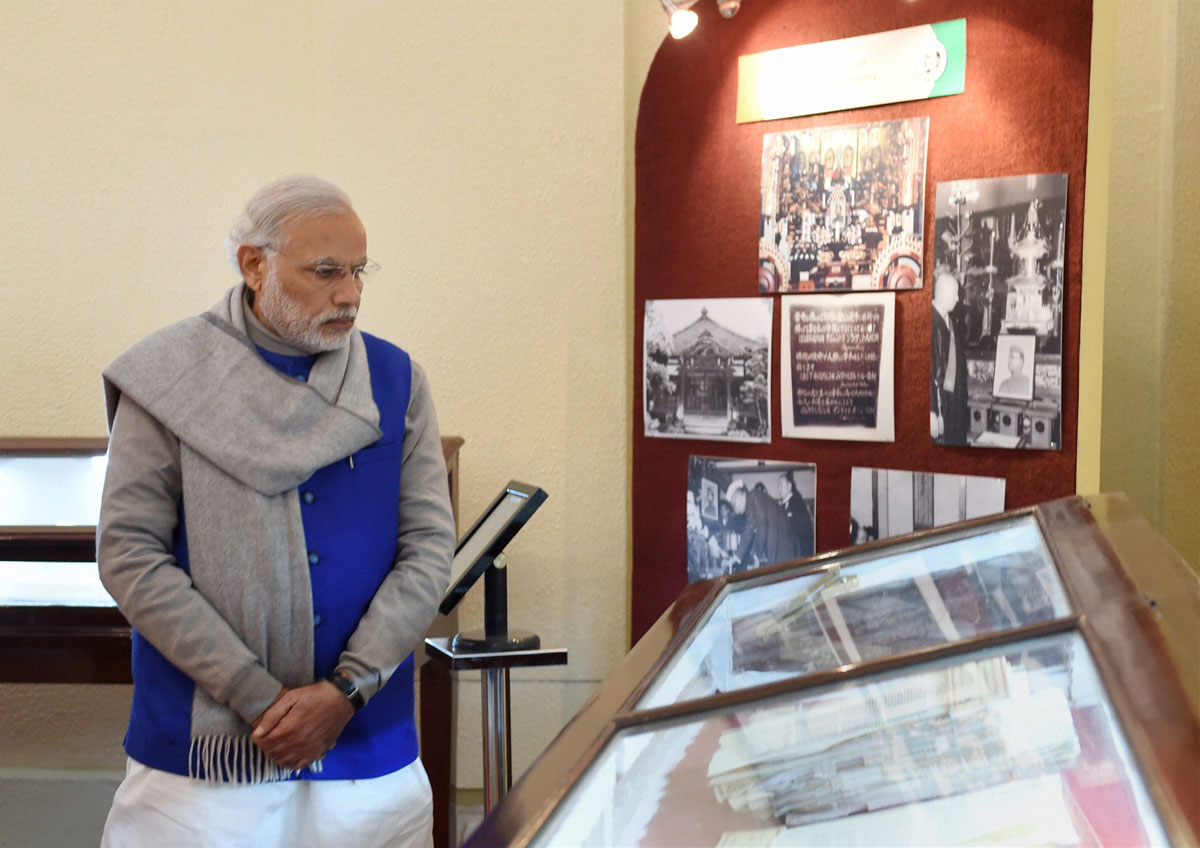UNCOVERING BURIED EVIDENCE
Prime Minister Narendra Modi going round the National Archives of India (NAI) where he released the digital copies of 100 declassified files related to Netaji Subhash Chandra Bose on his 119th birth anniversary, in New Delhi, Jan. 23. (Subhav Shukla | PTI)
A UK website set up to catalog the last days of Subhas Chandra Bose has released the evidence given by a Taiwanese official who claimed to have prepared Netaji’s body for cremation after his death in a plane crash in 1945, writes Aditi Khanna. (@Siliconeer, #Siliconeer, #bosefiles, #NetajiFiles, #NSCBose, #IndianFreedomFighters, #anitapfaff, #ashisray)
The testimony, contained in UK Foreign Office file No FC1852/6 and dating back to 1956, is among the last few documents to be released by www.bosefiles.info set up to establish that the Indian freedom fighter died in the crash on the outskirts of an airfield in Taipei on August 18, 1945.
“Taiwanese official Tan Ti-Ti, who was in charge of issuing cremation permits in Taipei, together with that of other local officials, put to rest any controversy about the last rites performed on Subhas Bose’s body,” the website said.
There has been controversy for decades as to whether the account of the plane crash is true, despite two Indian government investigations concluding that is how Bose met his end.

The proof contained in the Taiwanese police report sent to the British Foreign Office was, the file indicates, forwarded by the British High Commission in Delhi to the Indian government in July 1956.
Albert Franklin, British Consul General in Taiwan, wrote to the Taiwanese government requesting an investigation into the death of Bose on May 15, 1956.
In response, C.K. Yen, Chairman of the Taiwan Provincial Government, sent a detailed police report dated June 27, 1956.
This included an interview with Tan Ti-Ti, who said the cremation took place on August 22, 1945.
A Japanese army officer who accompanied the body told Ti-Ti: “The deceased was Bose, the Indian leader (on occasions he mentioned him as the Indian commander) who, proceeding to Tokyo on important business, was injured when his plane was involved in an accident.”
The previous day August 21, 1945 the same Japanese officer, according to Tan Ti-Ti, “submitted the death certificate of a certain Ichiro Okura.”
Yen clarified to Franklin that during World War II in the case of military personnel (Bose was then Supreme Commander of the Indian National Army) without family members in Taiwan, “permission for cremation was granted on the strength of a certificate from a military hospital.”
This appears to have occurred in the case of Bose.
The police findings based on a report prepared by Taiwan’s Department of Health said: “There is a register of cremations at the Municipal Health Centre (formerly under the Welfare Section of the Taipei Municipal Government) and the officers of the Health Centre are of the opinion that the entry (regarding cremating Bose) was made in the name of Ichiro Okura.”
Tan Ti-Ti confirmed that on the day of the cremation the same Japanese army officer “came to the crematorium in a car in the company of an Indian,” believed to be Bose’s ADC Colonel Habibur Rehman, who survived the crash.
Tan Ti-Ti asserted he and another person, called Lin Sui Mu, opened the coffin as the body had been “put into a coffin for conveyance to Tokyo but the coffin was too big for aeroplanes available at the time.”
It was, therefore, cremated in Taipei.
The next day (August 23, 1945), the Indian (Col Rehman) and the same Japanese army officer came to collect the ashes, Tan Ti-Ti added.
His version of events matches with Col Rehman’s statement recorded on August 24, 1945, which said “the body (of Bose) was cremated on 22-8-1945 at Taihoku (Japanese name for Taipei) under the arrangement of the (Japanese) Army authorities. The ashes were collected on 23-8-1945.”
On January 23, this year, the Indian government is slated to declassify a set of hitherto secret documents relating to Bose.
“I would be surprised if the Government of India files contradict anything our website has claimed,” said Ashis Ray, creator of bosefiles.info.
Bose’s daughter, Professor Anita Pfaff, who lives in Germany, has gone on record to say she finds the story of the air crash to be credible.


